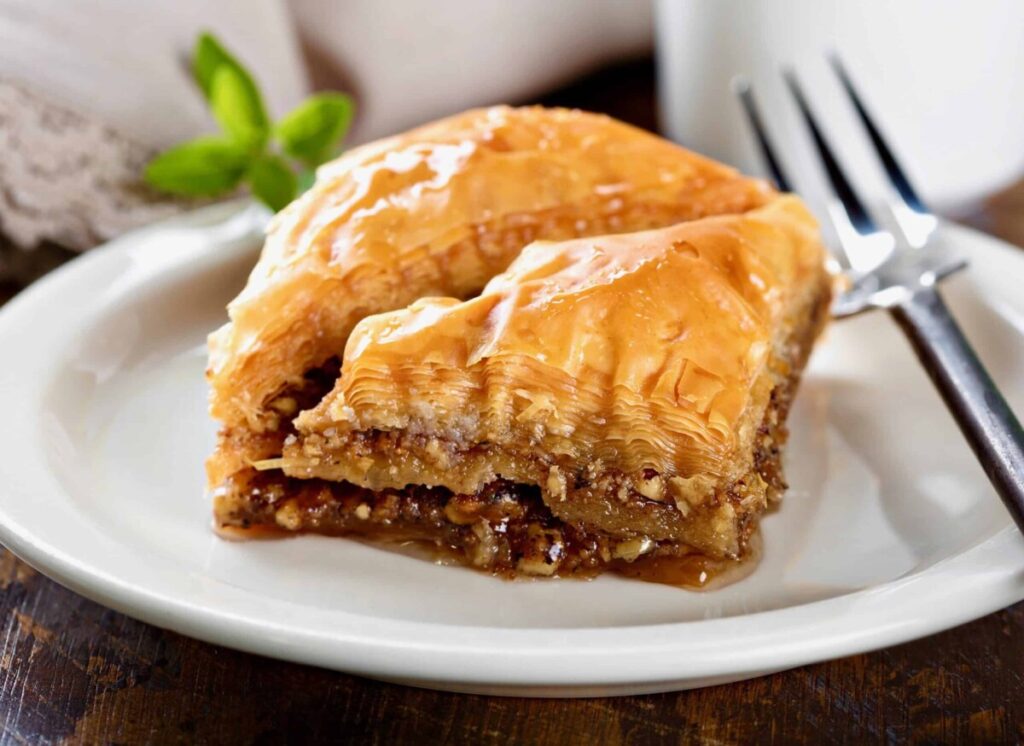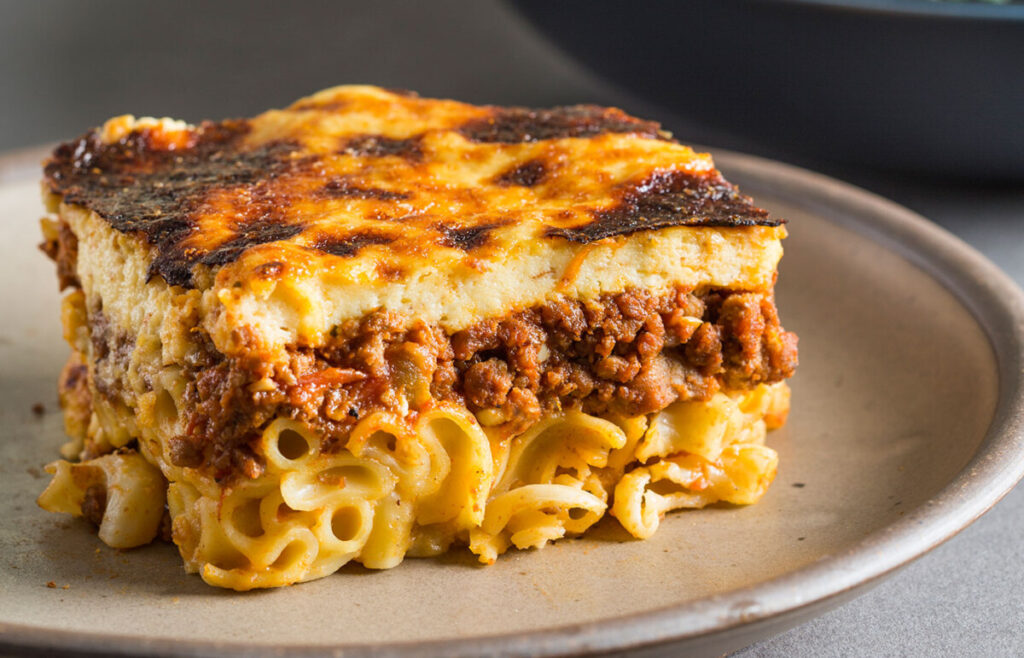Greek has many dishes, two would be Baklava and Pastitsio, Baklava contains nuts and butter with sugar, and after baking sweet syrup is poured over it so that it can be absorbed by the layers of phyllo, which is a very thin dough without a rising agent such as yeast. Pastitsio is a baked pasta dish that includes ground beef and bechamel sauce usually eaten with mixed greens, wine vinegar, and extra virgin olive oil (White, 2023). These foods are just a small example of the many delicious dishes Grecians create.

Figure 5: Baklava

Figure 6: Pastitsio
Greece has a mixture of cultures with various ethnicities and religions. Ethnic groups in Greece include Albanians, Romans, Aromanians, Macedonians, and Turks (Chepkemoi, 2019). Greek is the main language spoken in Greece but other languages are spoken as well as Armenian, Albanian, Macedonian Slavic, Romani, Turkish, and Bulgarian. Foreign languages are also spoken, mainly English with 48%, but also German, French, and Italian (Sawe, 2019). In Greece, 98% of Greeks are Christian Orthodox, and the rest of the population are Muslims, Roman Catholics, and Jewish (Greek Culture). There is a mixture of different cultures with multiple ethnic groups, languages, and religions happening in Greece.
Dress in Greece is known for draped clothing in ancient times. The two most common garments that were worn by women were the Peplos and the Chiton. Both garments are long tunics, and the Chiton is a lighter outfit made of linen or lighter wool that was a folded large rectangle and was half draped in the front and back (Ancient Greek and Roman Clothing). Even though Greeks wore draped clothing it was made of light material due to the hot summers since Greece is part of the Mediterranean. Greeks wear modern-style clothing daily but wear traditional regional costumes for festivals and national holidays (Jaracz). Greeks have progressed with their clothing like any other country and now wear modern clothing, but they wear draped clothing to festivals to express their culture. From marble sculptures, the public assumes Greeks wore mainly white garments, but their clothing used many colors such as yellow, red, light green, gray, and violet, and the fabric of their tunics was held with girdles, pins, and buttons (Polyzoidou, 2021). Ancient Greek clothing is known for having drapes and being only white but the clothing is worn with several colors.

Figure: 8 Peplos and Chiton Garments



Leave a Reply